How to Tell if a Pearl is Real? 6 Easy Steps to Find Out!

You may have heard this: “It is not easy to tell if a pearl is real.”?
While the statement holds some significance, it is not entirely true.
As a buyer, you can check your pearls physically for shape and size or conduct some other tests to know whether your possession is worth the money.
Most of them are simple, and anybody can perform them.
We will discuss the several pearl authenticity tests further in this article.
As we go along, you will find the correct methods for conducting these tests and much more.
What are real pearls?
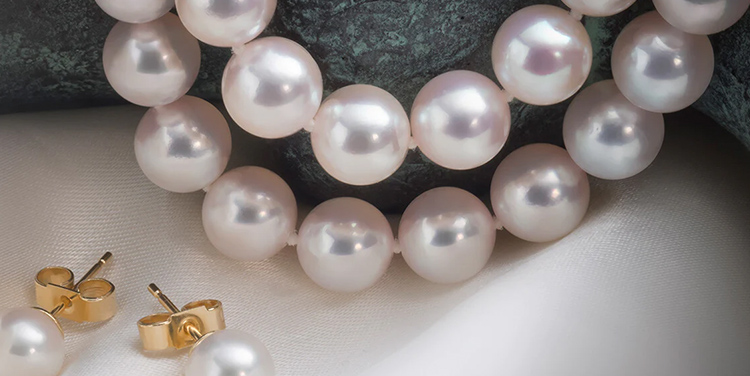
Real pearls are pearls that are borne and bred in oysters in either freshwater or saltwater bodies.
These pearls can be natural or cultured depending on the involvement of humans.
However, one must also note that natural pearls are highly rare now, and, hence, most of them have found a place in the museums.
Most of the pearls you buy today are cultured pearls.
These are grown in lakes and rivers by inserting a tissue graph taken from a donor mollusk.
After some time, a nacre forms over this irritant and stimulates the production of mother of pearl.
Within 1-2 years or sometimes more (depending on what pearl you are growing), you get a real cultured pearl.
What are fake pearls?
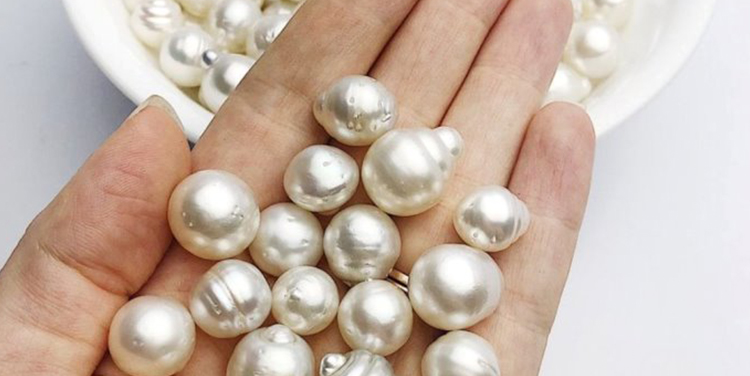
Unlike natural pearls, fake pearls are not reared in natural water bodies.
These are man-made creations using materials such as glass, plastic, and mollusk shells.
These are also known as imitation, costume, or faux pearls.
While preparing faux pearls, different beads are brought to life with a coat of iridescent substance.
This is what gives these fake pearls a natural radiance similar to that of the mother of pearl.
How to tell if pearls are real?
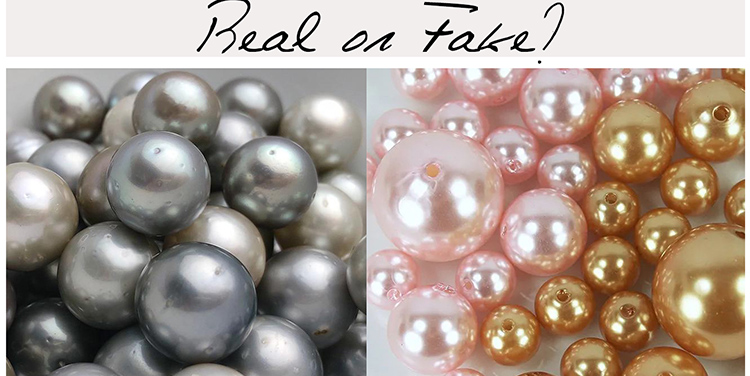
An easy way to tell whether the pearl you have is real or fake is by checking its color and radiance.
Some other tests that may also help you include the following:
Physical tests
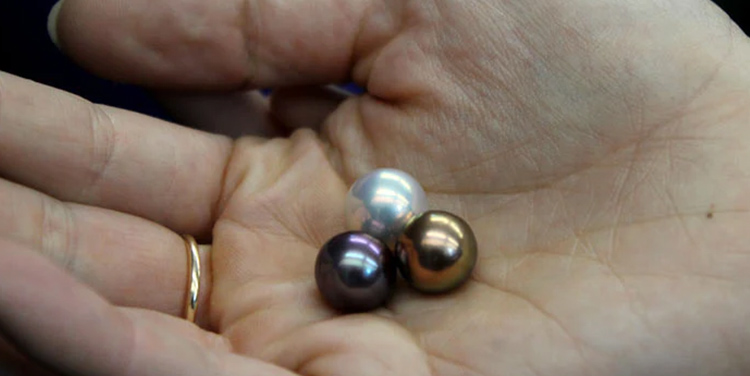
Check the shape
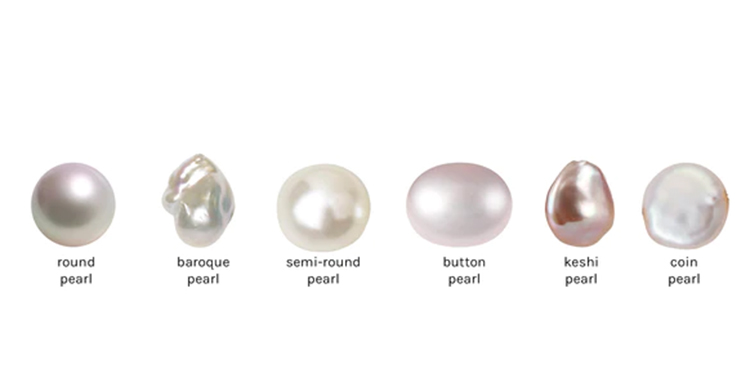
Round is a rare shape in real pearls. Even a necklace of real round pearls will display slight variations.
Some of the most common shapes available in real pearls include a button, circled, coin, drop, oval, near-round, or irregular baroque.
This is in contrast to faux pearls, which are of the same shape since machines create them.
The color test

Pearls, whether natural or cultured, have an overtone. If you own them, you know that these display a hue of pink or green over their main color.
It is one of the differentiating factors, as faux pearls are uniform in color with no overtone.
However, remember that some real pearls also lack overtone. So, this test alone cannot establish the authenticity of a pearl.
The weight test
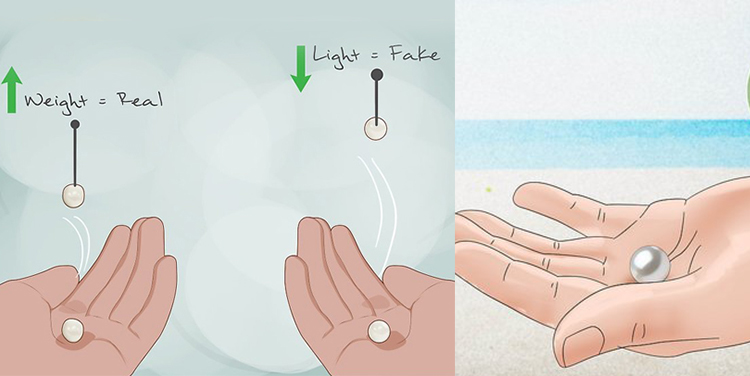
Generally, real pearls are heavier in weight than the fake pearls.
To test this, take a natural pearl in one hand and a fake one in another.
Toss them in your hand; you will notice that the real pearl weighs more than the fake one.
However, there is an exception. If the faux pearl is manufactured using solid glass beads, then this test may not provide you with accurate results.
This is because solid glass weighs more than natural or cultured pearls. Hence, you may need more tests to confirm the realness.
Other tests
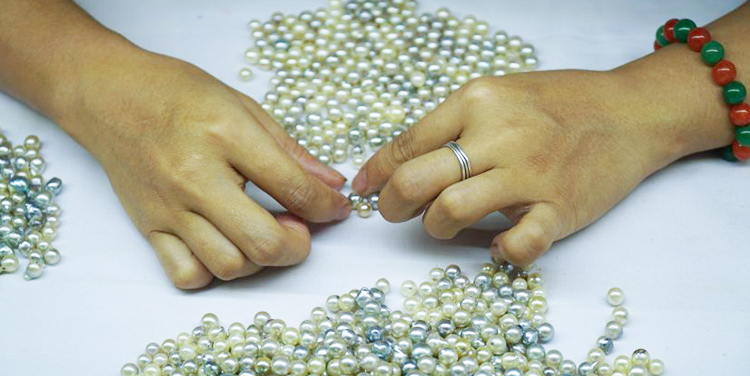
The bounce test

The bouncing ability varies greatly in real and fake pearls. Make a pearl fall on a glass from a height of almost 2 meters.
If it bounces up almost 1 meter, then it is a real pearl. However, if the rebounding capacity is lower than this, the pearl is fake or an imitation.
The Fire test

Try burning a pearl in a naked flame for a few moments. If the pearl remains iridescent, intact, and releases no odor, then it is most likely a real pearl.
But a fake pearl behaves differently. Keep it over a flame for 2 minutes, and you will hear a popping sound.
The Acetone test
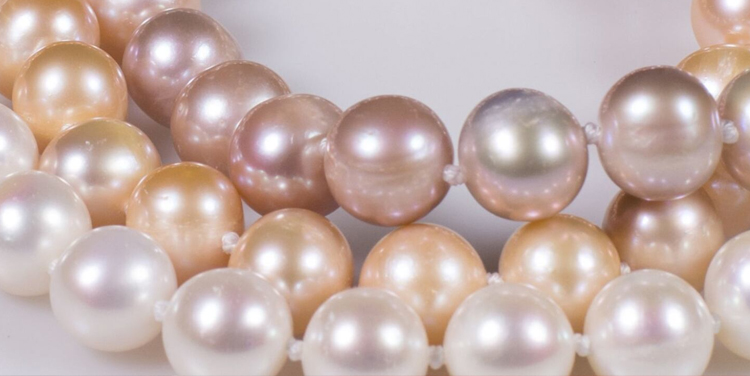
Some chemical tests can also be utilized to test the genuineness of a real pearl.
For instance, the relative density of a real pearl is 2.73, and it dissolves easily in hydrochloric acid.
Fake pearls, on the other hand, show no effect in HCl.
Also, they lose their shine and iridescence when you use acetone over them.
Look for drill holes
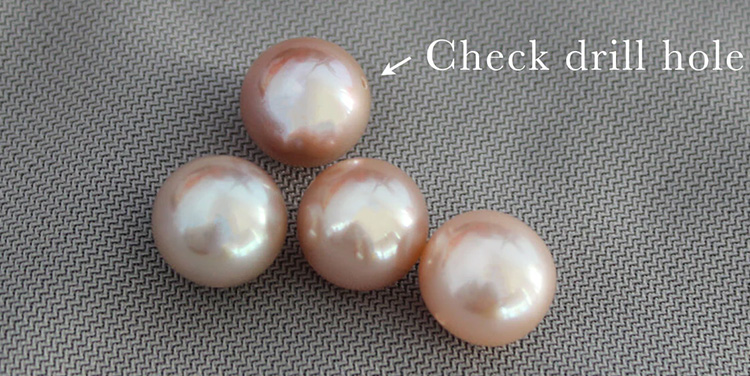
If you look closely at the drill holes in both natural and fake pearls, you will witness a stark difference.
While the holes in fake pearls are big and significant, the drill holes in real pearls are much smaller in size.
Not only this, but a microscopic examination will reveal that the coating near the drill holes is comparatively thinner and appears shinier in real pearls.
The coating may be peeling off in fake pearls. Also, real pearls have no signs of cracking or discoloration.
Rubbing test
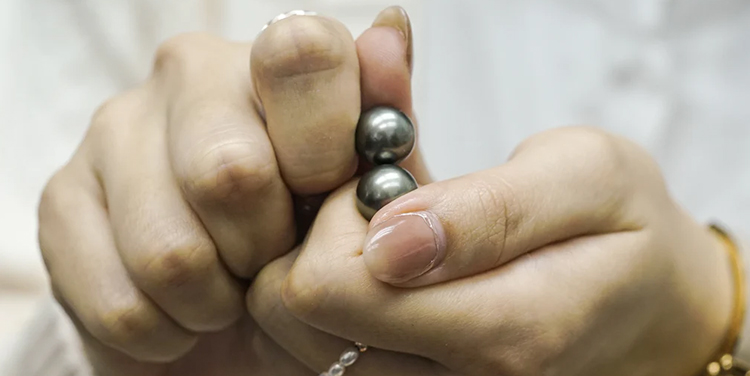
The layered nacre structure is believed to leave a textured surface on the pearls.
So, a tooth test can reveal a lot. Take a pearl and rub it on your front teeth.
If it feels smooth, the pearl is fake. However, if the pearl leaves a gritty feeling, the pearl is a real one.
The Temperature Test
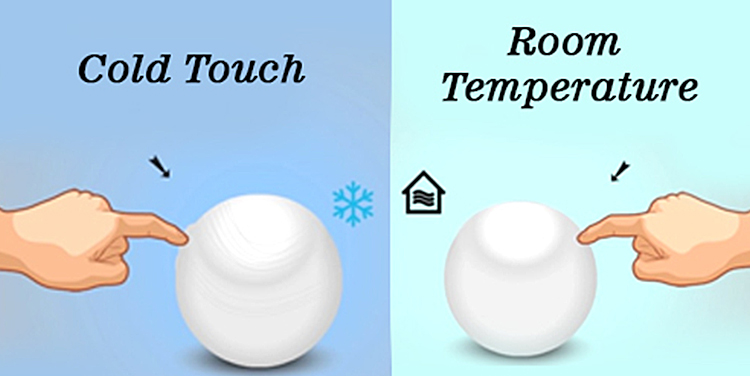
Real pearls feel cold as you touch them, irrespective of the climate, whether hot or cold.
The reason may lie in the place of their origin - the depths of water. But fake pearls are not cold.
They stay warm or at room temperature even when you are not wearing them.
In the case of real pearls, when you put on a real pearl, it will absorb your body temperature and become warm.
Yes, some high-quality fake pearls are capable of taking up your body temperature, but they generally take longer than the real pearls.
Sunlight Test
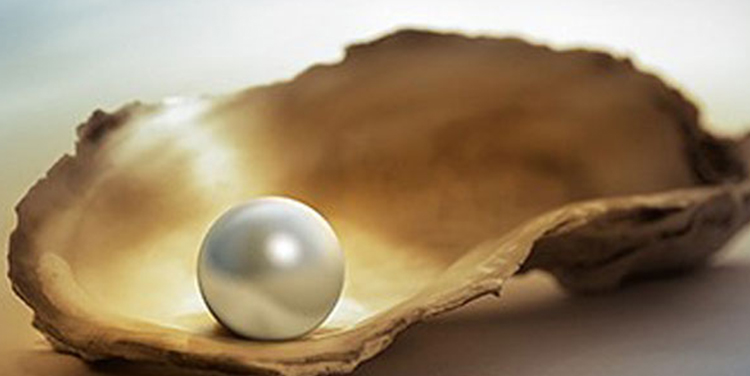
Real pearls exhibit an unmatchable radiance. If you’re an owner of a pearl necklace, take it out in the sun.
Pearls with slight color variations are highly likely to be real, whereas the fake pearls will all look similar and pearly white.
Friction Test
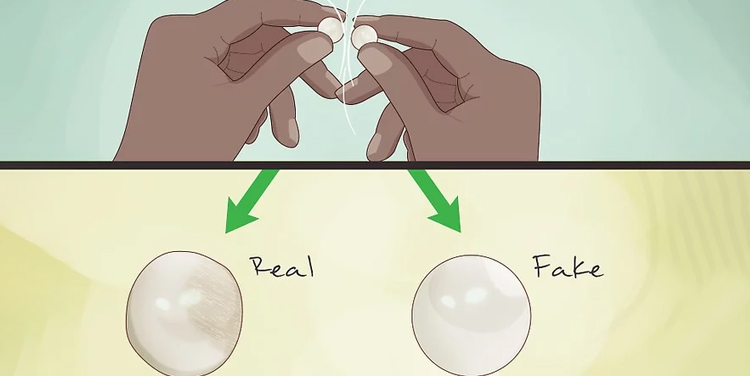
One might call this test slightly invasive, but it ensures 100 percent results.
Be prepared, as your pearls may face some degradation. Take two pearls and rub them.
If they leave a powdery residue, then they are real.
If nothing emanates, you are holding a fake pearl. In some cases, even fake pearls will have something coming off, but it will not be close to the fine powder.
The Sound test

Listen to your pearls. Here’s how: grab two pearls and knock them together.
If you hear a metallic sound, it is highly likely to be a fake pearl. But real pearls create a soft and warm sound.
You can also scrap two pearls. When the sound is slightly sandy, you are holding real pearls.
These were some essential tests that can be leveraged to know the realness of the pearl.
How to tell if different types of pearls are real?
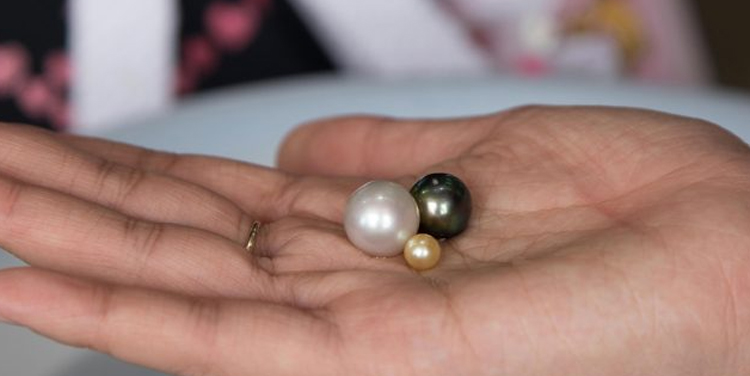
While the above tests may help you to establish the authenticity of pearls, it is interesting to note that a few more tests may be needed to confirm it completely.
This is especially true in the case of different types of pearls: freshwater, Akoya, or Tahitian.
How to tell if freshwater pearls are real?
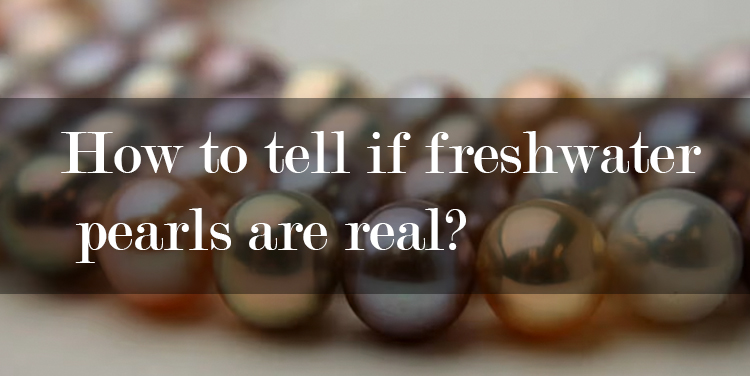
Look closer at the shape and luster of the pearl. Freshwater pearls have a soft, satiny luster that radiates from within.
This is in contrast to fake pearls, wherein the radiance is superficial and visible only on the surface.
Also, freshwater pearls come in several shapes and showcase irregularities, bumps, or blemishes.
They are rarely round, whereas the fake pearls are always of the same round shape.
How to tell if Akoya pearls are real?

On an Akoya pearl, look for spots and match their shape and luster.
You may notice tiny spots, lighter or darker patches, and small, white lines on their surface.
Real Japanese Akoya pearls are almost perfectly round and smoother, too.
It is interesting to note that they exist in other shapes as well, such as baroque.
While they are much more lustrous than freshwater pearls, their shine can be compared to that of a mirror.
How to tell if Tahitian pearls are real?
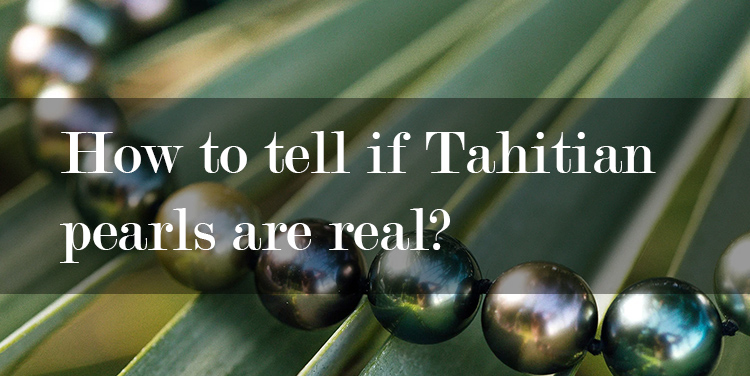
Tahitian pearls have a high reflective power. The reflection is so high that one can see his face in it.
But if you come across a dull or blurry pearl, then chances are that it is a faux Tahitian pearl; they are mostly made up of plastic.
Conclusion
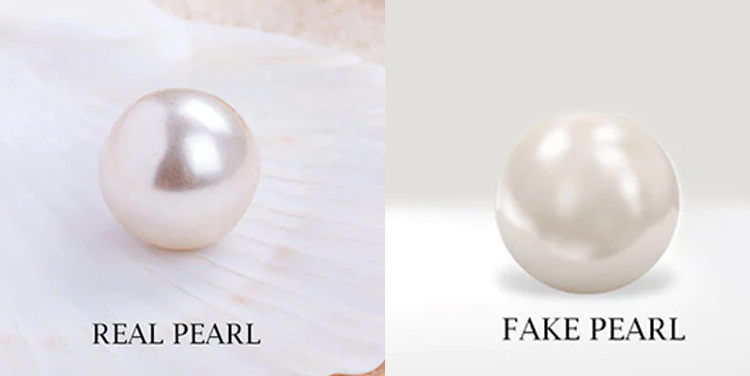
As a buyer, you cannot rely on the above tests alone to know whether the pearl is real or fake.
You may be required to combine several tests to conclude. Getting advanced tests from a gemological laboratory is also a good option.
Or you should buy the product from a reputed seller who provides you with a certificate of authenticity.
This way, you can be sure that the pearl you own is 100% real.
Learn More:
Unveiling the Secrets: How to Tell Real vs. Fake Pearls
One Trick to Help You Distinguish Between Real and Fake Pearls


Leave a Comment